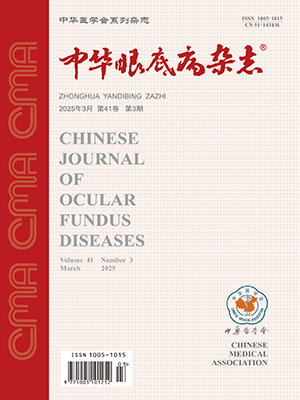Objective To investigate the correlation of ascorbic acid distribution and retinal susceptibility to iron toxicity of the retina.Methods Autoclaved iron particles of 5 mg and 15 mg were implanted into the vitreous cavities of 32 Spragu-Dawley (SD) rats and 9 rabbits, respectively. The retinal sections of rats and rabbits were examined after hemotoxylin-eosin (HE) staining. Apoptos is of rabbits′retinal neurons was investigated by TdT-mediated dUTP-biotin nick-end labeling (TUNEL). Chinoy′s method was used to observe the distribution of as corbic acid in the retinae of the 2 kinds of animals.Results In rats, histological and structural densification was observed only in the photoreceptor cells after implantation of the iron particles. In rabbits, however, histological and structural destruction as well as TUNEL-positive nuclei were observed in all neuronal layers of the retina 3 days after the implantation of the iron particles. Silver granules reduced by ascorbic acid from silver nitrate were observed only in the outer nuclear layer in normal rats retinae, while they were observed evenly throu ghout all layers of rabbits′retinae. Conclusions The suscept ibility of retina to iron toxicity is correlated to the distribution of ascorbic acid in retina. (Chin J Ocul Fundus Dis,2003,19:269-332)
Citation: WANG Zhijun,LAM Kwokwai,Mark O.M. Tso.. The correlation of ascorbic acid distribution and retinal susceptibility to iron toxicity of the retina. Chinese Journal of Ocular Fundus Diseases, 2003, 19(5): 303-305. doi: Copy
Copyright © the editorial department of Chinese Journal of Ocular Fundus Diseases of West China Medical Publisher. All rights reserved




